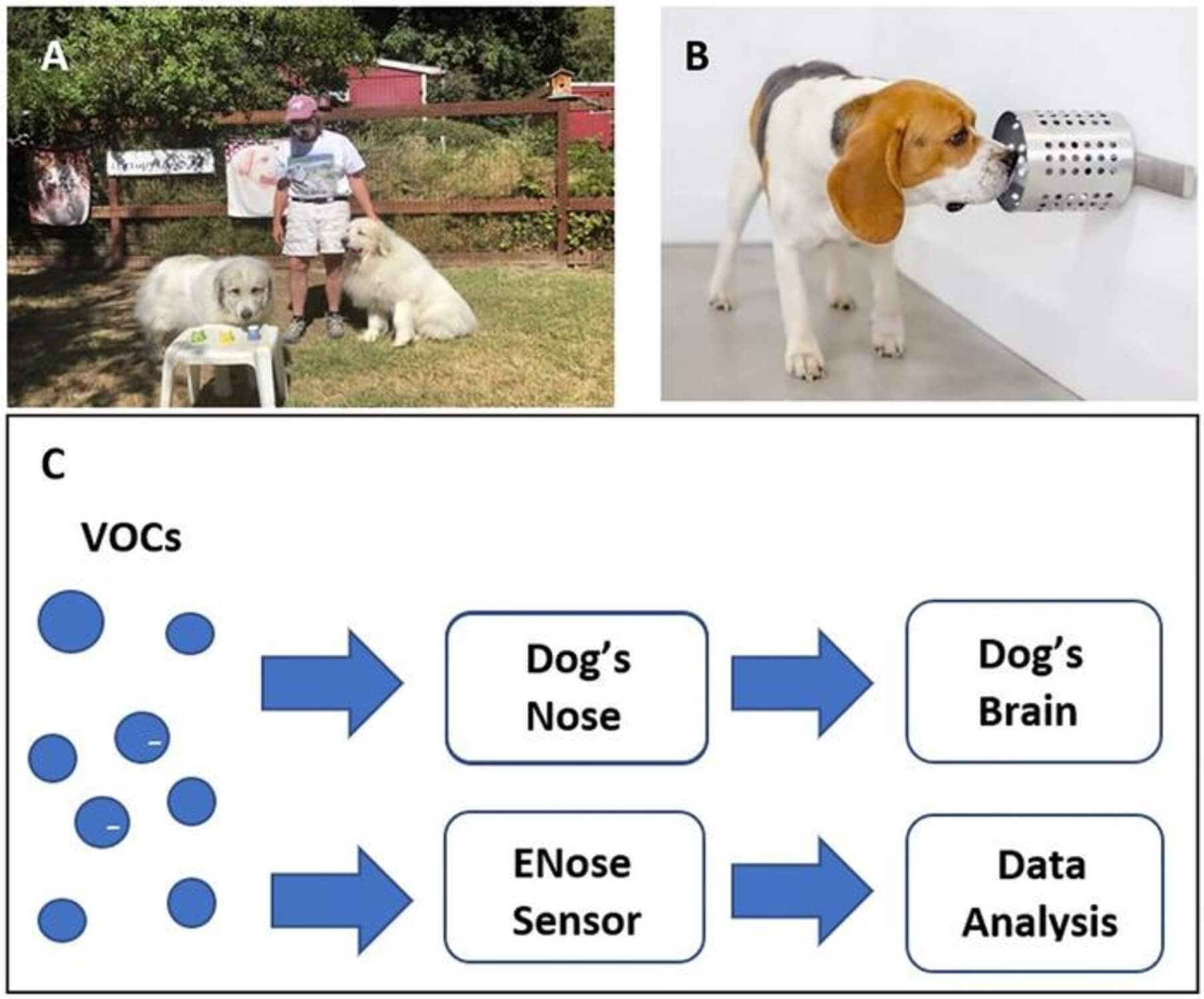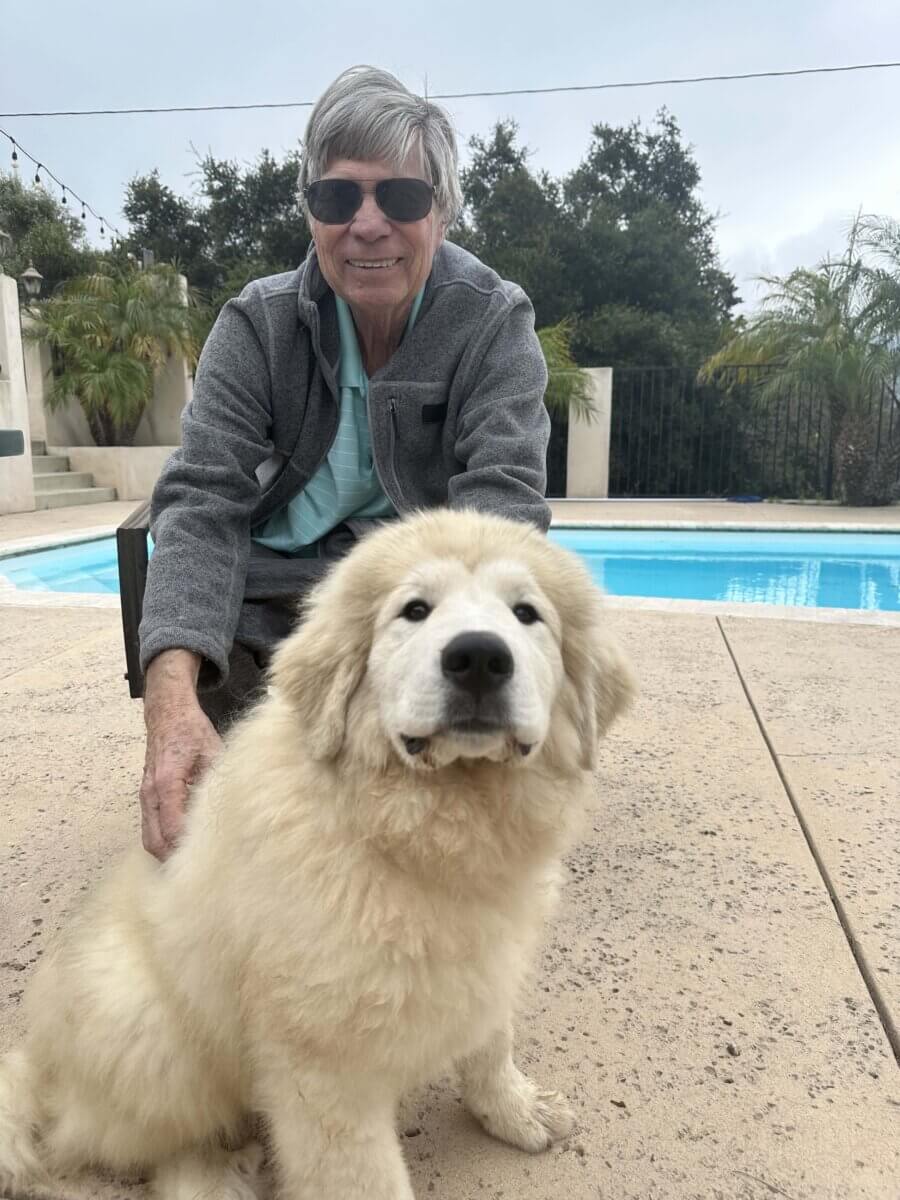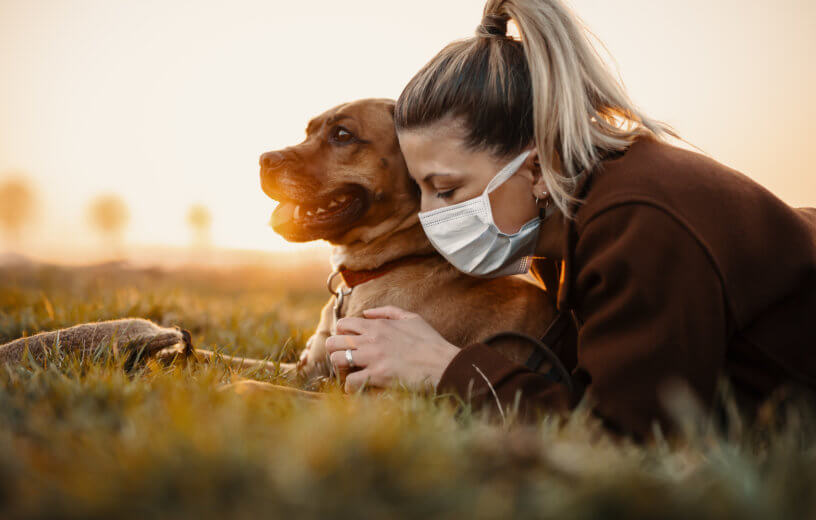SANTA BARBARA, Calif. — Modern technology is mightily impressive, but when it comes to detecting COVID-19, new research indicates nothing human-made can compete with a dog’s incredible sense of smell. Scientists at the University of California-Santa Barbara report the notion that dogs are the best way to detect COVID-19 is finally gaining some acceptance in medical and scientific communities.
How are dogs better than the latest technologies and viral tests?
Study authors say our four-legged friends can actually be a faster, more precise, and less expensive method of identifying COVID-19 than any test available today. Researchers explain that a mounting pile of evidence and studies have emerged over the past two years or so showcasing the incredible efficiency of dogs when it comes to detecting the covert coronavirus and all of its variants. Dogs can even sense COVID-19 when it has been obscured by other viruses, like the common cold and the flu.
“It went from four papers to 29 peer-reviewed studies — that includes more than 400 scientists from over 30 countries and 31,000 samples,” says UC Santa Barbara Distinguished Professor Emeritus Tommy Dickey in a university release.

The research team conducted an extensive survey of only peer-reviewed studies published by traditional academic publishers, including both field and clinical experiments. The detection trials included direct sniffing of individuals and samples such as sweat, saliva, or urine. This approach led to the conclusion that the collective research base clearly showcases that trained scent dogs are “as effective and often more effective” than antigen tests countless keep handy at their homes, as well as reverse transcription polymerase chain reaction (RT-PCR) tests deployed across clinics and hospitals. The RT-PCR test has long been considered the gold standard of COVID tests.
So, not only can dogs detect the SARS-CoV-2 virus faster, but they can do so without anything being stuck in your nose. Dogs also eliminate the environmental impact that comes along with single-use plastics seen in many COVID-19 tests.
It’s hardly a secret what facilitates dogs’ amazing sense of smell — their highly evolved noses. A dog’s nose houses 300 million olfactory receptors, while human noses have just five to six million. Meanwhile, a third of a dog’s brain is dedicated to interpreting smells, compared to a mere five percent for human brains. This is what makes the difference and allows dogs to detect very low concentrations of odors associated with COVID-19 infections.

“They can detect the equivalent of one drop of an odorous substance in 10.5 Olympic-sized swimming pools,” Dickey adds. “For perspective, this is about three orders of magnitude better than with scientific instrumentation.”
Beyond detecting symptomatic COVID-19 cases, these trained canines identified pre-symptomatic, asymptomatic, and even long COVID patients, along with detecting new variants. The rapid results, within seconds to minutes, combined with a reduction in plastic waste and lab expenses, present a compelling case for a shift in diagnostic methodology. Dickey says that dogs can pick out COVID-19 and its numerous variants despite the presence of other potentially confounding respiratory viruses.
“They’re much more effective,” the study author notes. “In fact one of the authors that we quote in the paper commented that the RT-PCR test is not the gold standard anymore. It’s the dog. And they’re so quick. They can give you the yes or no within seconds, if they’re directly smelling you.”
Sometimes, a studied dog would give a person a quick sniff and sit down to indicate the presence of COVID-19. Other times, the dog was provided a sweat sample to smell, which could take a few minutes longer. Speed is an important consideration in scenarios like the early stages of a pandemic. During such an event, a span of days between the test and the result could hold major consequences.
Scent dogs, more specifically beagles, basset hounds, and coonhounds, are the most ideal dogs for sniffing out COVID-19. However, some studies revealed a variety of other dogs can perform quite well, too. After a few weeks of training, regardless of age or gender, purebreds and mixed breeds all performed well. For example, during one study, a “problem” pit bull terrier that had been abused was able to detect COVID-19 very accurately.
Despite all of this compelling evidence, researchers say many in the scientific and medical communities remain skeptical.
“Although many people have heard about the exceptional abilities of dogs to help humans, their value to the medical field has been considered fascinating, but not ready for real-world medical use,” says Dickey in a statement. “Having conducted this review, we believe that scent dogs deserve their place as a serious diagnostic methodology that could be particularly useful during pandemics, potentially as part of rapid health screenings in public spaces. We are confident that scent dogs will be useful in detecting a wide variety of diseases in the future.”
The study is published in the Journal of Osteopathic Medicine.

